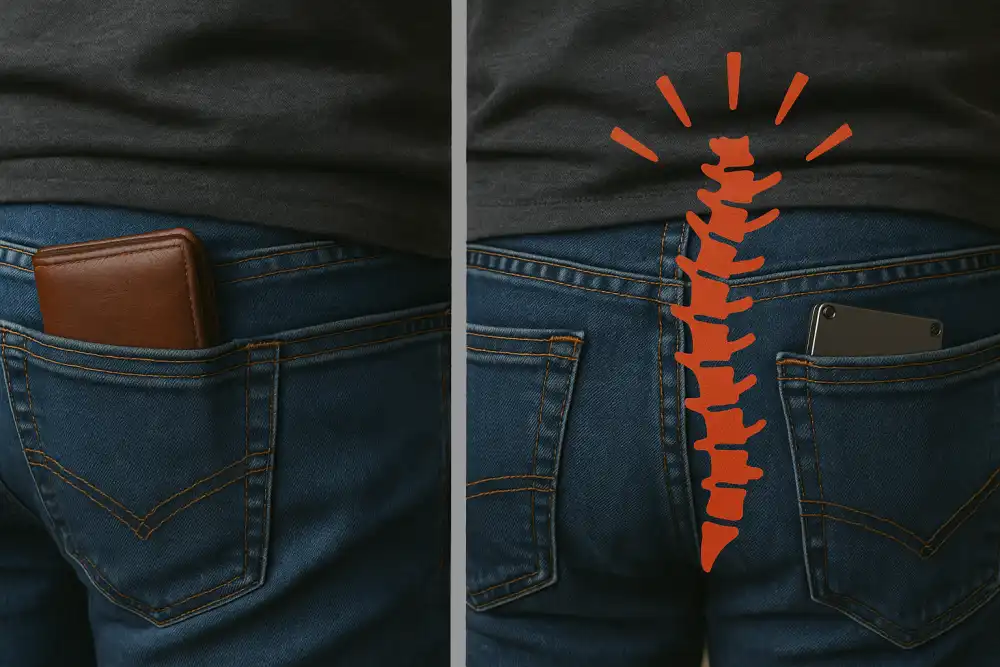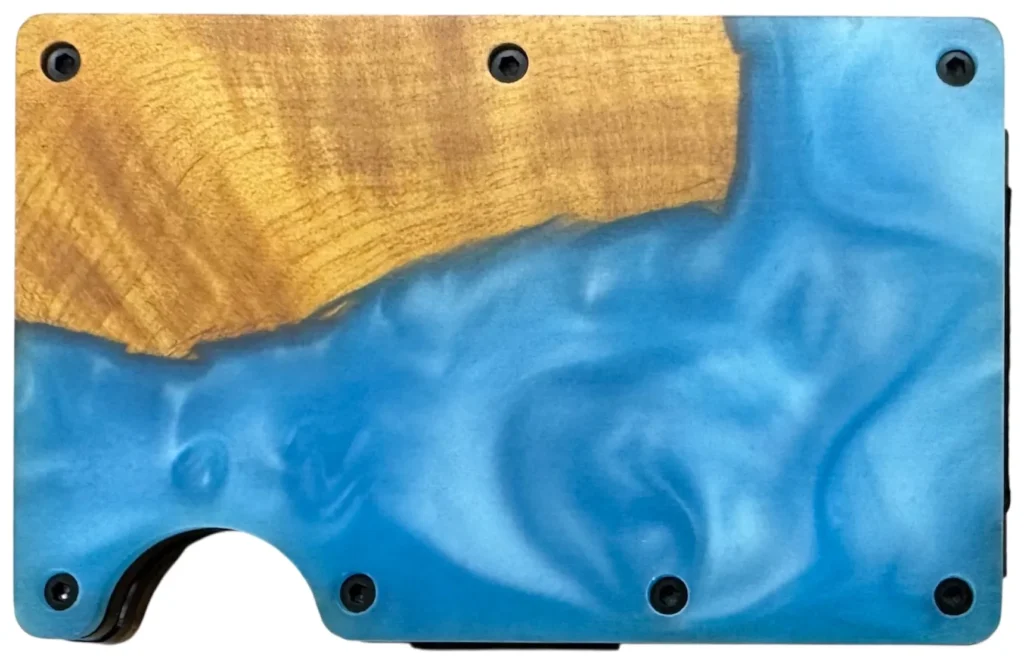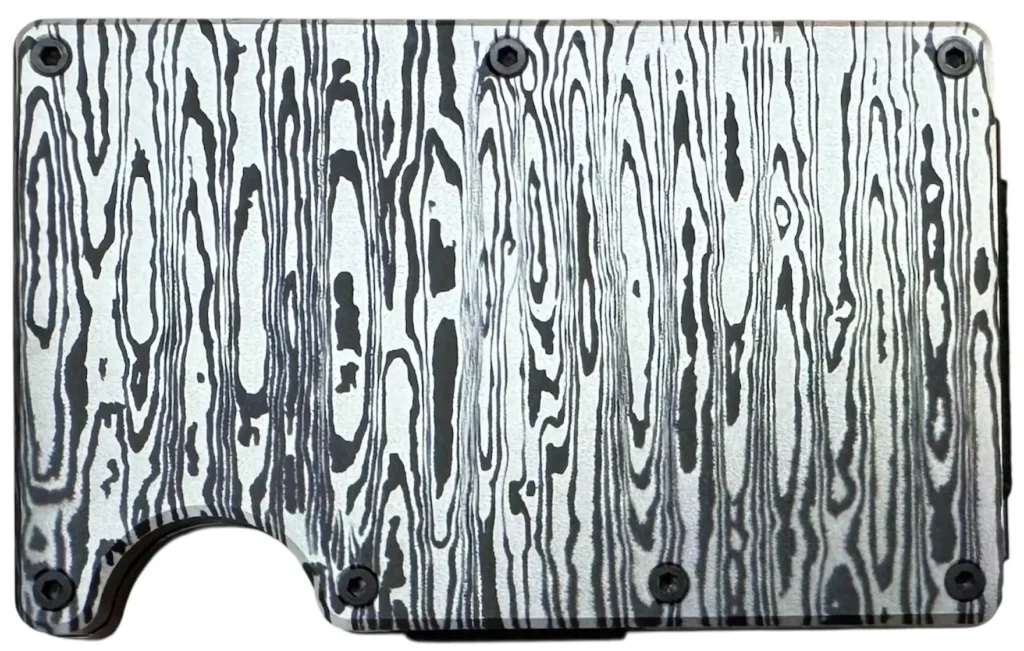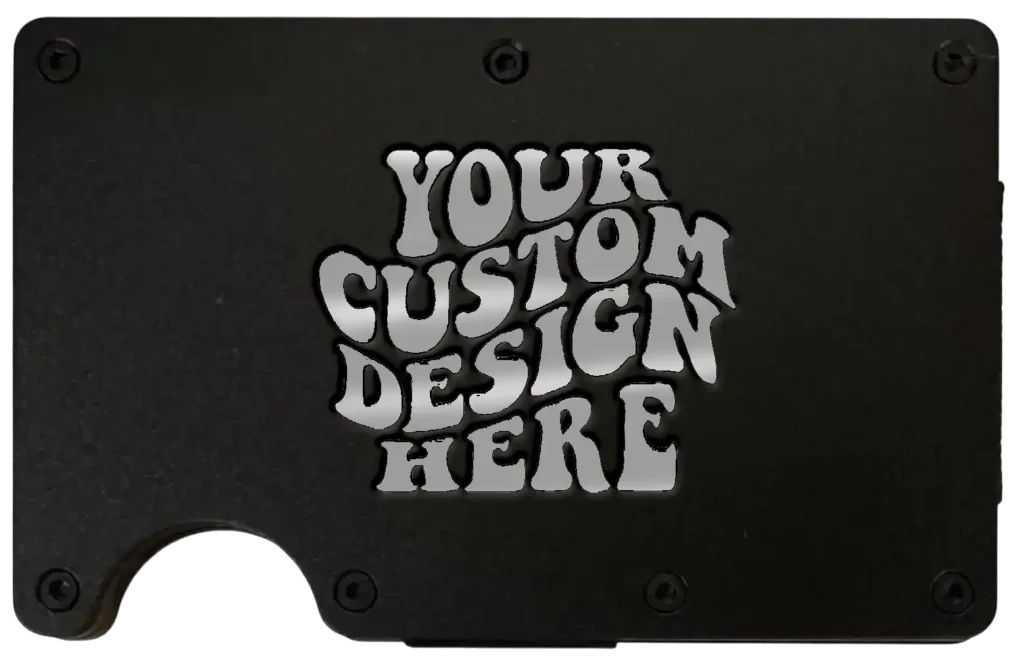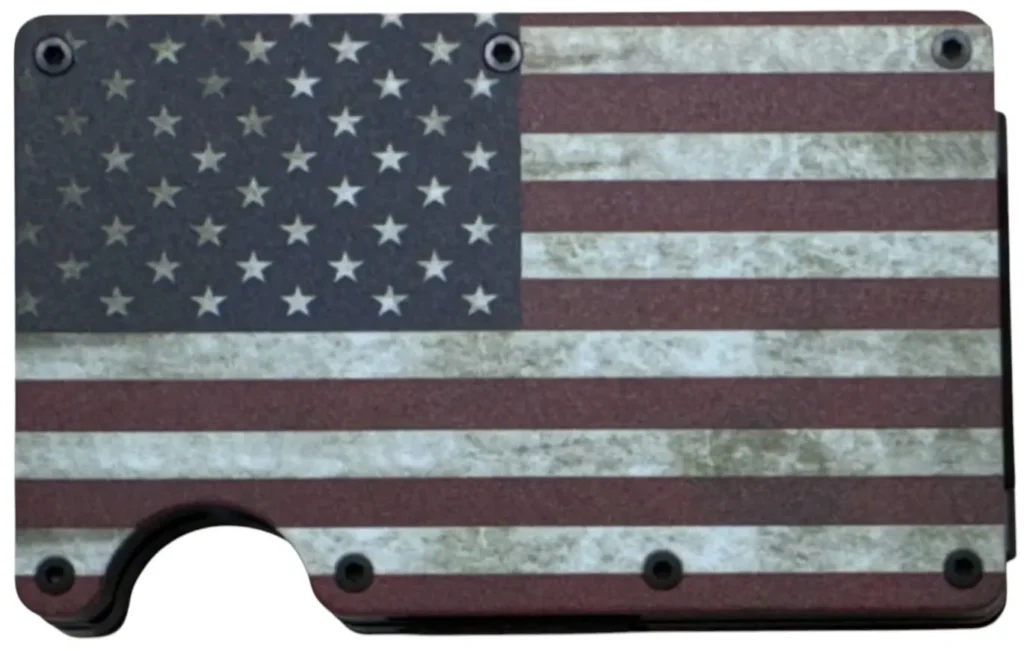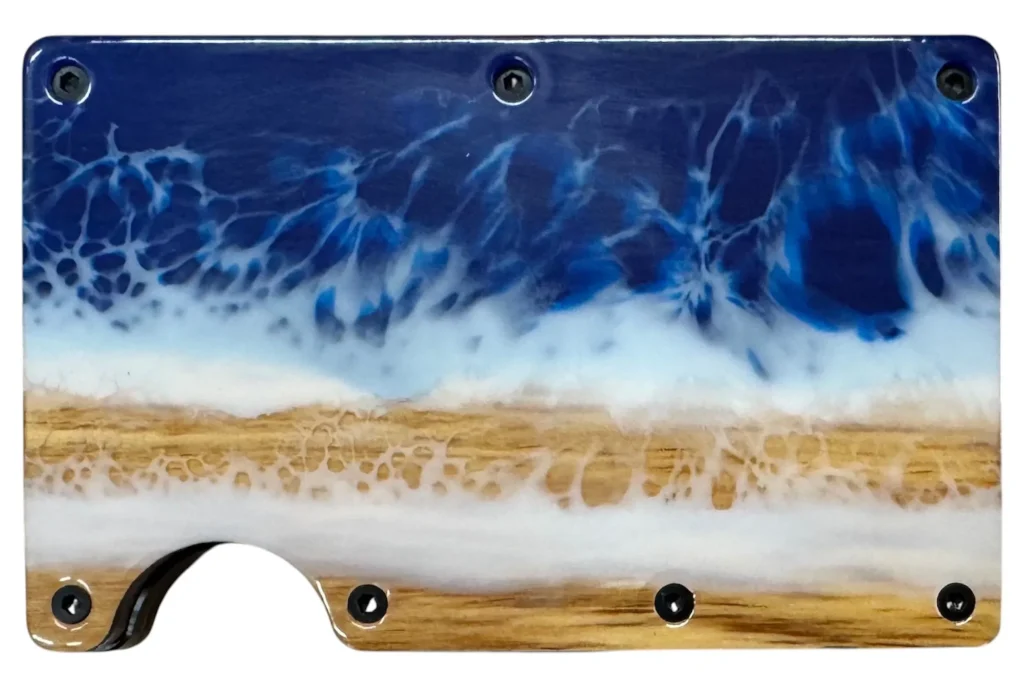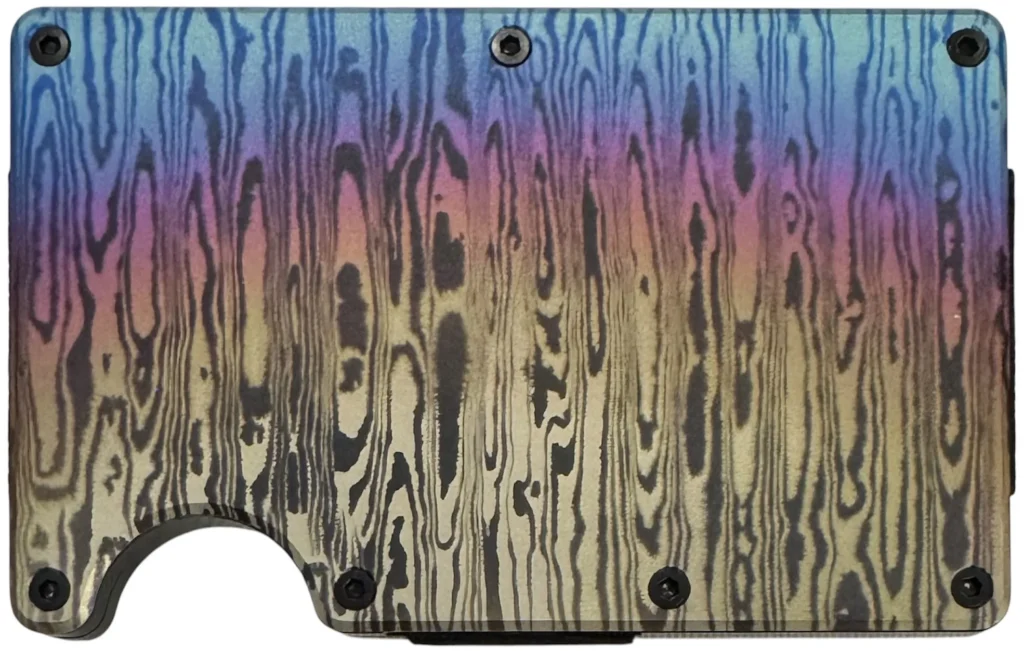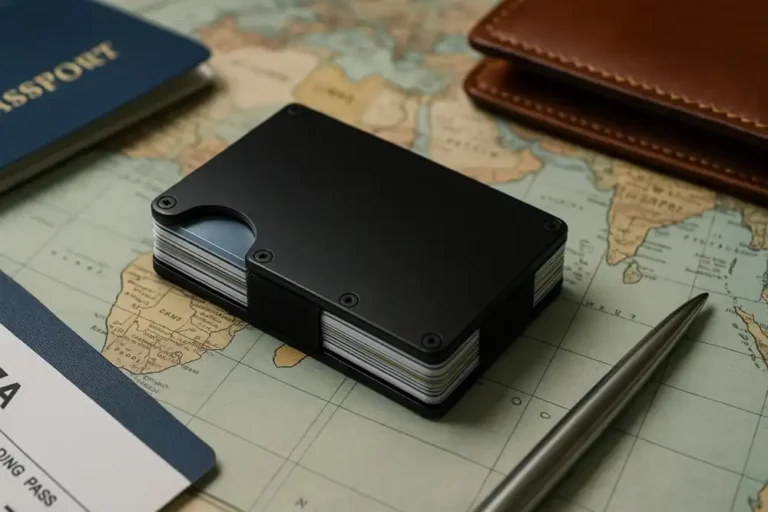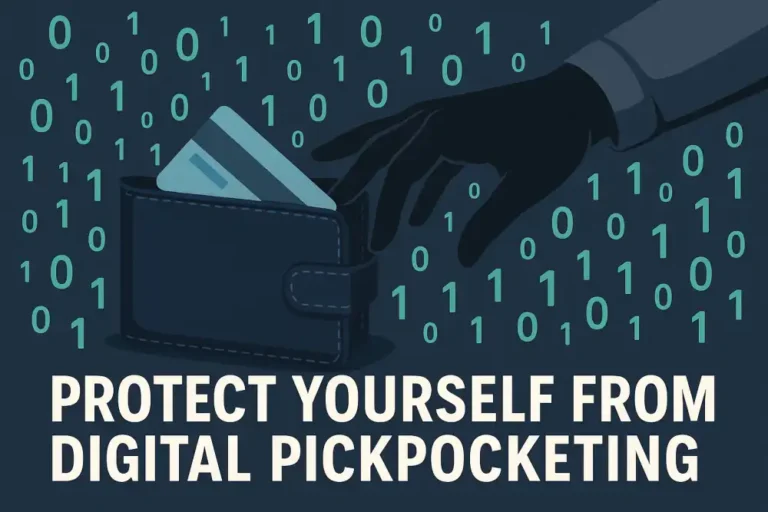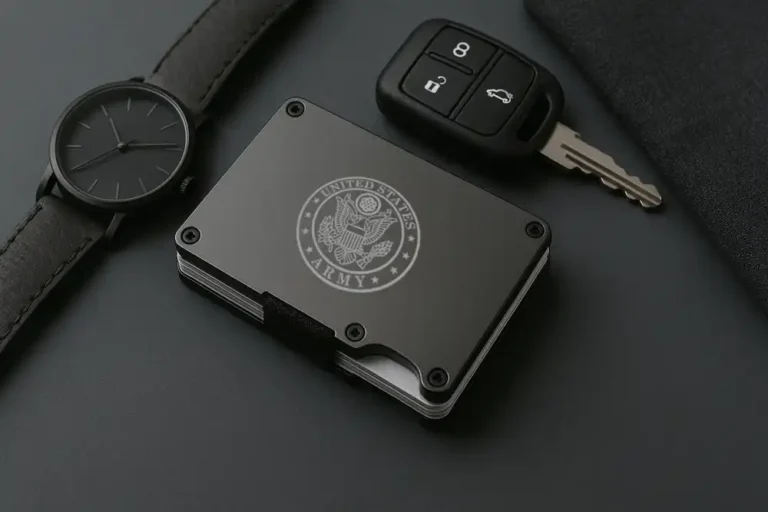Transform Your Wallet: Simple Changes for Better Health
How Your Wallet Could Be Hurting You—And the Slim Fix You Need to Prevent Pain and Improve Posture
In today’s minimalist and ergonomically focused world, many overlook a hidden source of discomfort: the bulky wallet. Though lightweight, a bulky wallet in your front pocket or tucked tightly away can cause back pain, altered posture, and even sciatic nerve irritation – a condition known as “wallet sciatica.” This article explains wallet sciatica, its causes and symptoms, and how switching to a slim, ergonomic wallet can ease pain, improve spinal alignment, and enhance convenience. For those looking for ergonomic wallet options, visit our shop to discover innovative designs. To learn more about our design philosophy and the passion behind our products, please check the about-us section. And if you have any questions or need further assistance, feel free to contact us for personalized advice. cascade custom creations, renowned for handcrafted, laser-engraved goods, offers solutions that blend long-term health benefits with style and security.
With increasing emphasis on health and aesthetics, it is crucial to understand how everyday items affect our well-being. Faulty wallet design can disrupt biomechanics, contributing to abnormal spinal curvature and unwanted pressure on nerves. By exploring wallet sciatica and providing practical solutions—including ergonomic wallet features and expert tips on choosing a slim wallet—we show how a small change can improve posture, reduce pain, and add security with features like RFID protection. This is about embracing a healthier, more comfortable lifestyle.
What Is Wallet Sciatica and How Does It Affect Your Health?
Wallet sciatica occurs when a bulky wallet, forced into a tight pocket, exerts uneven pressure on the piriformis muscle and nearby nerves. This pressure causes pain, numbness, and tingling along the lower back and legs and disrupts natural posture. The extra bulk shifts pelvic alignment, compelling the body to compensate, which may lead to chronic discomfort. Studies in ergonomics have shown that continuous gluteal pressure can impinge nerves. In 2022, health practitioners noted that patients switching from bulky to slim wallets experienced about a 30% reduction in lower back pain intensity.
What Causes Wallet Sciatica and Back Pain From Bulky Wallets?
The root cause of wallet sciatica is the constant pressure from an overstuffed wallet on the sciatic nerve and surrounding muscles. When a wallet is carried in the front pocket, its weight and size force a twist in the lumbar spine, leading to chronic inflammation of the piriformis muscle and adjacent tissues. A physical examination may reveal tenderness and muscle spasms, especially in those who carry too many cards, coins, and cash. Relocating or switching to a slim wallet can significantly reduce this mechanical load on the lower back, especially for those with preexisting lumbar issues or sedentary lifestyles.
What Are the Common Symptoms of Wallet-Related Sciatica?
Common symptoms include persistent lower back pain radiating into the buttocks and, sometimes, the leg. Patients often report tingling, numbness, or muscle spasms due to nerve compression. Sitting for long periods can intensify the pain, and many unconsciously lean away from the affected side to ease discomfort. Physical therapists highlight that these symptoms, though similar to classic sciatica, are primarily mechanical. Reducing the bulk in your pocket often leads to significant improvements in pain and mobility.
How Can Poor Posture Result From Carrying a Bulky Wallet?
A bulky wallet forces the pelvis to compensate for uneven weight, leading to poor posture over time. This misalignment stresses certain muscle groups while underusing others, causing strain, joint wear, and diminished spinal support. Studies show that balanced weight distribution is crucial for proper posture; when a heavy wallet upsets this balance, the spine’s natural curve is disrupted, increasing the risk of long-term musculoskeletal issues. Removing bulky items from pockets is a simple yet effective way to restore natural spinal curvature.
Why Is Wallet Sciatica a Growing Concern?
Despite digital transactions, many still rely on traditional wallets, which are often overstuffed with cards, cash, and receipts. This reliance, combined with sedentary lifestyles, has increased the incidence of wallet-induced sciatica. The trend toward minimalist wardrobes that use front pockets further compounds the problem. As urban lifestyles grow busier and ergonomics become more important, more people are linking bulky wallets with chronic back and sciatic issues. This growing awareness is pushing manufacturers to design slimmer, more efficient wallets that address these health concerns.
How Does an Ergonomic Wallet Improve Your Posture and Reduce Pain?
Slim, ergonomic wallets are designed to minimize bulk and evenly distribute weight, helping to alleviate pressure on the lumbar spine. Users often report improved spinal alignment and reduced pressure on the gluteal muscles immediately after switching. By reducing the wallet’s dimensions, these designs prevent forced twisting of the hip and help maintain balanced weight distribution across the hips—leading to better posture and a lower risk of sciatic irritation.
Engineered with durable yet lightweight materials such as premium leather, carbon fiber, or lightweight metals, ergonomic wallets often include RFID protection. Their streamlined design allows the wallet to lie flat, reducing the twisting or tilting effect that causes discomfort. Studies indicate that slim wallets can reduce the asymmetrical load by up to 25%, providing notable relief from chronic back pain.

What Features Define an Ergonomic or Slim Wallet?
An ergonomic wallet is characterized by its streamlined design, light construction, and minimalist storage. These wallets typically have fewer compartments to hold only the essentials—essential cards and a modest amount of cash—thereby reducing bulk. Materials such as premium leather, carbon fiber, and innovative fabrics are common, ensuring durability, comfort, and resistance to wear. Many slim wallets also feature RFID-blocking technology to prevent identity theft. Their design not only improves spinal alignment by reducing bulk but also encourages a clutter-free lifestyle that complements minimalist living.
How Does a Slim Wallet Promote Better Spinal Alignment?
Slim wallets help maintain neutral pelvic positioning by reducing the extra bulk that can force the body into asymmetrical postures. With their reduced profile, these wallets do not disrupt the natural curvature of the lower spine, ensuring proper weight distribution. This minimizes the lateral tilt of the pelvis, thereby reducing muscle strain and nerve compression. Medical practitioners have observed that transitioning to a slim wallet often results in a noticeable improvement in overall posture, reducing both immediate discomfort and long-term spinal issues.
What Are the Health Benefits of Switching to a Minimalist Wallet?
Switching to a minimalist wallet offers multiple health benefits. Many users report immediate relief from lower back and hip pain due to reduced nerve compression. Over time, better circulation can be achieved by minimizing the pressure on blood vessels and nerves in the gluteal region. Improved spinal alignment enhances mobility and reduces joint stiffness. Additionally, with less tension in the surrounding muscles comes enhanced relaxation and lower overall stress. This ergonomic change contributes to more efficient body mechanics and may help prevent various musculoskeletal disorders.
How Do Experts Recommend Using Slim Wallets for Back Pain Prevention?
Experts suggest incorporating slim wallets into a broader ergonomic strategy to combat wallet sciatica. Clinicians advise switching to a minimalist wallet and monitoring pocket usage to ensure even weight distribution. Physical therapists often recommend pairing slim wallets with targeted postural and core strengthening exercises. Additional advice includes carrying the wallet in the less dominant pocket or using a secure, lightweight pouch. This multi-pronged approach, combining ergonomic accessories and exercise, effectively reduces the strain on the musculoskeletal system.
What Are the Key Benefits of Using a Slim Wallet Solution?
Slim wallet solutions offer clear benefits in convenience, style, and overall health. First, reducing wallet bulk diminishes physical strain while promoting better posture and reducing back and sciatic pain. The ergonomic design ensures even weight distribution, directly combating common issues linked to bulky wallet use.
In addition, slim wallets are functionally superior by featuring limited, curated storage that prevents clutter. Modern features such as RFID blocking protect against identity theft without adding unnecessary weight. With designs crafted from premium materials like titanium, carbon fiber, or high-grade epoxy, slim wallets meet practical needs and aesthetic preferences—making them the ideal accessory for today’s style-conscious and health-aware consumer.
How Does a Slim Wallet Enhance Convenience and Efficiency?
By offering only as much space as needed, slim wallets simplify daily routines. They allow for quicker access to cards and cash, reduce the risk of jams in tight pockets, and overall, enhance organizing efficiency. The minimalist design discourages hoarding unnecessary items, leading to reduced clutter and a more streamlined method of carrying essentials. This improved organization not only saves time but also supports better posture by eliminating the extra weight that can disrupt balance.
What Style and Material Options Are Available in Slim Wallets?
Slim wallets are offered in a variety of styles and materials to suit different tastes and functional needs. Classic options include full-grain leather, which provides a timeless look, while modern alternatives like carbon fiber, aluminum, and titanium offer a sleek, durable, and lightweight profile. Designs vary from traditional bifold and cardholder styles to innovative modular types that let users customize storage. Many models now include RFID protection, ensuring security without compromising on the wallet’s slim profile. This variety allows consumers to choose a wallet that fits their aesthetic while promoting proper ergonomics and reducing physical strain.
How Does RFID Protection Add Security to Slim Wallets?
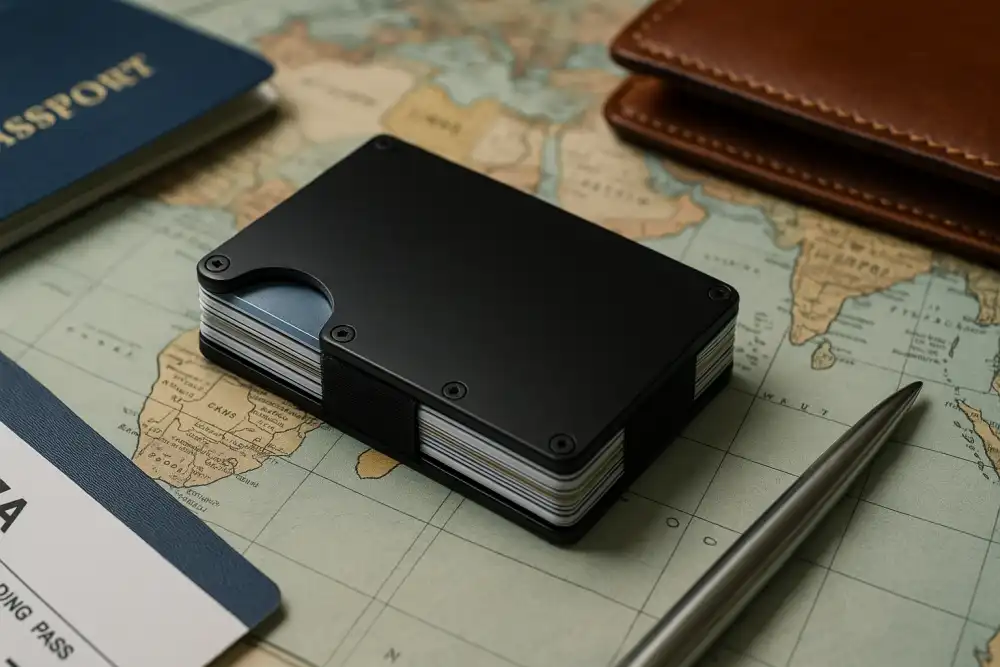
RFID protection in slim wallets enhances security by blocking wireless signals that can be used for unauthorized scanning of personal information. With identity theft and data breaches on the rise, this feature protects sensitive financial data stored on RFID-enabled cards. Integrated seamlessly into the slim design, RFID-blocking layers ensure that the convenience of a compact wallet does not compromise personal security, making these wallets a practical choice for modern users.
What Are the Top Slim Wallet Brands and How Do They Compare To Cascade Custom Creations?
Several leading brands have established themselves in the slim wallet market by offering advanced features and high-quality materials. For example, Bellroy and Ridge are known for their minimalist, RFID-blocking designs—Bellroy for its sustainable, full-grain leather options and Ridge for its ultra-slim, durable metal constructions. Other brands like SlimFold focus on lightweight, weather-resistant fabric designs, while Secrid incorporates innovative sliding mechanisms. The table below highlights the key differences:
Before the table, note that comparing these brands helps clarify each product’s value, ensuring consumers choose a wallet that meets both security and ergonomic needs.
How Can You Choose the Right Slim Wallet for Your Needs?
Choosing the right slim wallet involves evaluating your personal needs, ergonomic goals, style preferences, and budget. Start by considering how many cards and how much cash you typically carry; a minimalist wallet should hold only what is essential. Think about your daily routine and preferred method of carry—whether in a suit pocket, front pocket, or bag—to ensure the design you choose works best for your lifestyle.
Personal style matters too. Some may prefer the classic appeal of leather, while others opt for modern metal-based solutions that offer enhanced durability. Reviews and testimonials can provide insights into build quality and long-term performance, and factors like the type of closure (bifold, cardholder, or snap), RFID security, and overall weight are crucial when making your decision.
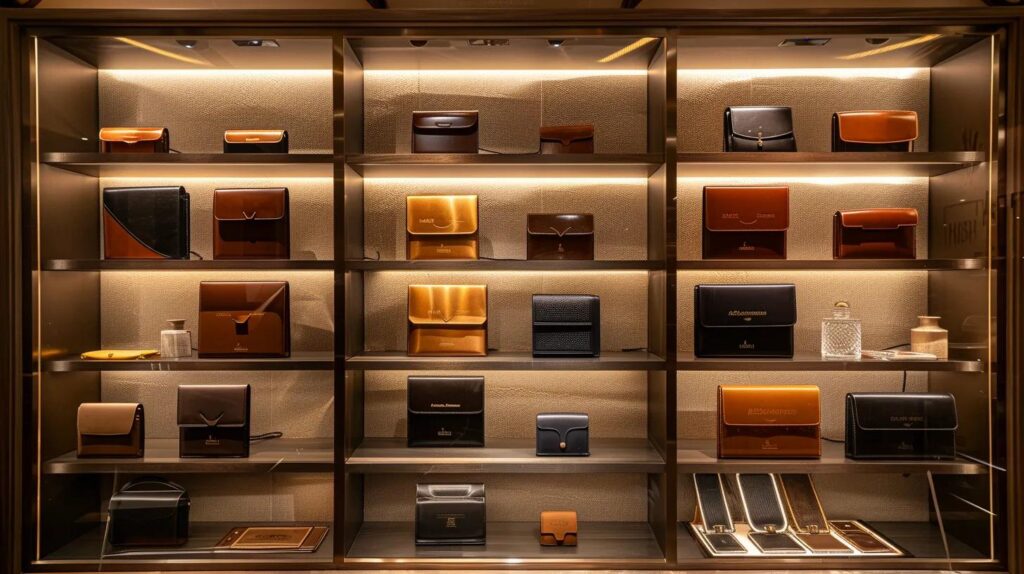
What Factors Should You Consider When Selecting a Slim Wallet?
Key factors include storage capacity, security features such as RFID-blocking, quality of materials, and overall design ergonomics. The wallet’s capacity should match your daily use without leading to excess bulk. High-quality materials like premium leather or robust metals ensure longevity and a refined look, while thoughtful design promotes neutral spinal alignment by evenly distributing weight. Price and warranty, along with user reviews, also help ensure you select a wallet that adds convenience and supports your health.
How Do Different Slim Wallet Types Compare: Bifold, Cardholder, and More?
Slim wallets come in several styles. A bifold wallet offers compartments for cash and cards and is suited to those who need moderate storage. Cardholder designs, being even slimmer, work well for carrying just a few essential cards. Minimalist clip-style wallets secure your cards without adding bulk, often featuring quick-release functions for extra convenience. Your choice will depend on daily use, organization style, and personal aesthetic preferences.
What Are the Price Ranges and Value Propositions of Popular Slim Wallets?
Slim wallets are generally priced between $40 and $150. Entry-level models made from high-tech fabrics are affordable and functional, while premium versions made from full-grain leather or robust metals offer superior durability and style. The main value lies in their design’s ability to enhance security and improve posture, which can lead to long-term savings by reducing expenses related to back and hip pain and by simplifying your everyday carry.
How Can User Reviews and Testimonials Help in Choosing a Slim Wallet?
User reviews and testimonials provide real-world insights about durability, ease of use, and impact on posture. They help clarify whether a wallet’s RFID protection or ergonomic design lives up to its claims. By comparing models through honest feedback, potential buyers can confidently select a slim wallet that suits both their personal style and health needs.
How Can You Prevent Back Pain and Wallet Sciatica Through Lifestyle Changes?
Reducing back pain and wallet sciatica isn’t just about switching wallets; it also involves lifestyle changes. Maintaining proper posture while sitting and standing is essential, and regular stretching can counteract the strain of prolonged sitting. Taking periodic breaks to walk or perform targeted lumbar exercises can help reduce muscle tension and promote spinal mobility.
Incorporate ergonomic practices at work by adjusting chair height or using lumbar supports. Minimalist living—carrying only the essentials—reduces the overall weight burden, keeping the lower back healthier. These routine adjustments help mitigate pain and prevent further postural deterioration.
What Posture Tips Help Reduce Wallet-Related Back Pain?
Avoid carrying heavy wallets in a single front pocket; alternate pockets or use a bag instead. When sitting, support your lower back and keep both feet flat on the floor. Regular stretching that targets the lumbar region and hip flexors is beneficial. Physical therapists recommend standing breaks and using ergonomic chairs to maintain a neutral spine, which can significantly reduce chronic pain.
How Does Minimalist Living Extend Beyond Your Wallet?
Minimalist living means reducing unnecessary possessions to alleviate both physical and mental stress. By carrying only what is needed, you reduce clutter and avoid the cumulative strain of additional weight. This approach not only improves your physical health by supporting better posture but also enhances mental clarity and reduces daily stress.
What Daily Habits Support Spinal Health When Using a Wallet?
Simple daily habits can protect spinal health while using a wallet: engage in regular physical activity, practice mindful posture correction, and incorporate short stretching sessions into your routine. Strengthening your back and core muscles through exercises, and using ergonomic furniture, helps reduce strain. Maintaining a healthy weight further ensures that extra stress on the lower back is minimized.
How Can Regular Exercise Complement the Use of a Slim Wallet?
Regular exercise, including core training, yoga, and stretching, supports better posture and spinal stability. These activities strengthen the muscles that support your back and pelvis while improving circulation. Combined with a slim wallet that minimizes bulk, regular exercise reduces inflammation and decreases the risk of chronic back pain, contributing to overall physical resilience.
What Are the Most Common Questions About Wallet Sciatica and Slim Wallets?
Consumers often wonder how wallet design affects back pain and whether slim wallets offer real relief. Here are some common questions and brief answers based on collective observations and user reviews.

What Is Wallet Sciatica and How Can It Be Treated?
Wallet sciatica is lower back and leg pain caused by a bulky wallet pressing on the sciatic nerve. Treatment involves removing the pressure by switching to a slim, ergonomic wallet and practicing proper posture. Additional measures include applying heat or cold packs and engaging in physical therapy or stretching exercises.
Can a Slim Wallet Really Prevent Back Pain?
Yes, a slim wallet can help prevent back pain by reducing the uneven weight distribution that forces your body into unnatural positions. Many users experience improved posture and decreased discomfort when switching from a bulky wallet to a minimalist design. Although it is not a cure-all, it is an important component of a broader strategy to reduce musculoskeletal strain.
How Many Cards Should a Slim Wallet Hold for Optimal Comfort?
For optimal ergonomic benefits, a slim wallet should hold between four and six essential cards along with a modest amount of cash. This limit helps maintain a truly slim profile while reducing clutter and ensuring that the wallet does not force an uneven hip alignment.
Are Slim Wallets Suitable for Everyday Use and Style?
Slim wallets are perfectly suited for everyday use as they combine ergonomic benefits with modern style. They provide quick access to essentials without sacrificing security features like RFID-blocking. Their sleek, sophisticated designs make them ideal for both casual and professional settings while reducing physical strain.
How Is the Slim Wallet Market Growing and What Trends Should You Know?
The slim wallet market is growing rapidly as consumers become more aware of ergonomic health and minimalist design. Manufacturers are now offering customizable solutions that combine practicality with modern aesthetics and enhanced security. Sales have been rising steadily, and many innovations—such as smart features integrated into wallets—reflect the trend toward products that also protect against digital threats. Increasing online reviews and testimonials further support the benefits of slim wallets for reducing chronic pain and improving overall well-being.
What Are the Latest Consumer Trends in Minimalist Wallets?
Recent trends include a shift toward eco-friendly materials, innovative design integrations, and advanced security features. Consumers favor wallets made from recycled or sustainable materials paired with smart technology, like built-in tracking or biometric locks. These trends, along with the athleisure and minimalist lifestyle movements, demonstrate a clear preference for products that offer both style and substantial ergonomic benefits.
How Has Ergonomics Research Influenced Wallet Design?
Ergonomics research has driven wallet manufacturers to create products that reduce bulk and prevent posture-related issues. Findings indicate that even minor increases in thickness can misalign the pelvis and contribute to back pain. Manufacturers now design slimmer, lighter wallets that maximize card accessibility and security without disturbing spinal alignment.
What Are the Health Statistics Related to Wallet Sciatica and Back Pain?
Studies suggest that nearly 30% of individuals carrying bulky wallets report chronic lower back or sciatic pain, with up to 25% showing noticeable postural deviations linked to wallet bulk. These statistics underscore the necessity of adopting ergonomic solutions like slim wallets to reduce extra weight and avoid long-term musculoskeletal issues.
How Are Brands Innovating to Meet Health and Style Needs?
Brands continue to innovate by using advanced materials and incorporating smart design features. Many now offer RFID-blocking layers, customizable compartments, and ultra-slim profiles that cater to both health-conscious and style-savvy consumers. Companies like Bellroy, Ridge, and Secrid are at the forefront, refining their products based on user feedback and ergonomics research.
Frequently Asked Questions
Q: What is wallet sciatica? A: Wallet sciatica is a condition where a bulky wallet exerts uneven pressure on the piriformis muscle and sciatic nerve, causing lower back and leg pain that affects posture.
Q: How does carrying a bulky wallet cause back pain? A: A bulky wallet forces the pelvis to twist, leading to an imbalance in weight distribution that stresses the lower back muscles and irritates the sciatic nerve.
Q: Can switching to a slim wallet reduce the risk of sciatica? A: Yes, by reducing bulk and maintaining proper spinal alignment, a slim wallet decreases the risk of developing wallet sciatica and related discomfort.
Q: Are slim wallets secure enough for everyday use? A: Absolutely. Modern slim wallets incorporate RFID-blocking technology, ensuring enhanced security against identity theft while also being ergonomically beneficial.
Q: What additional lifestyle changes can help prevent wallet-related back pain? A: Along with switching to a slim wallet, adopting good posture, regular stretching, and core strengthening exercises—while carrying only essential items—can significantly reduce back pain.
Q: How quickly can I expect relief after switching to a slim wallet? A: Many users notice improved posture and reduced discomfort within a few weeks, provided they maintain ergonomic habits alongside the wallet switch.
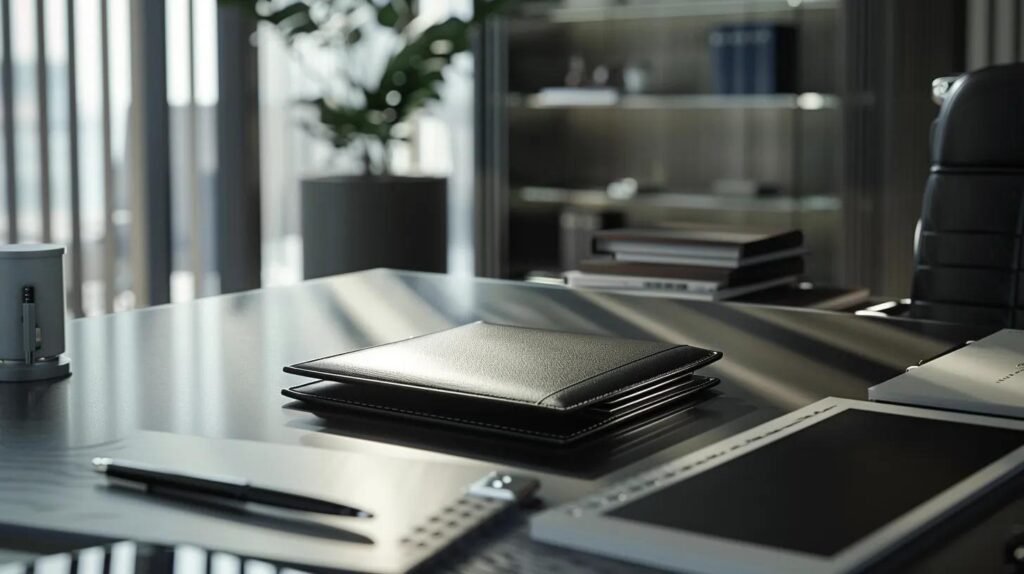
Final Thoughts
Wallet sciatica is an often-overlooked condition caused by carrying a bulky wallet that disrupts natural alignment and causes pain. Switching to a slim, minimalist wallet offers noticeable relief, improved posture, and added security with features like RFID protection. When combined with simple lifestyle changes such as proper posture, regular exercise, and minimalist carrying habits, the benefits extend far beyond convenience—paving the way for long-term spinal health and overall well-being.

